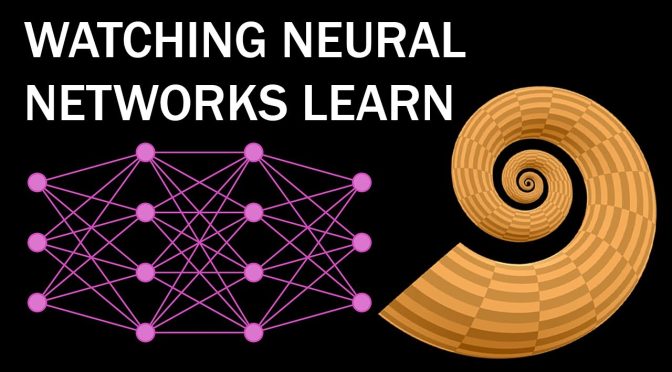In today’s digital age, neural networks have become a cornerstone of machine learning, driving advancements in artificial intelligence. These intricate systems, designed to mimic the human brain’s processing patterns, have the profound ability to learn, adapt, and predict. Based on the video titled “Watching Neural Networks Learn” by Emergent Garden, we are offered a unique lens into the world of neural networks. Through visualization and detailed explanations, the video unravels the complexities of these networks, providing insights into their function-building capabilities and their potential applications in real-world scenarios.
Contents
- The Essence of Functions
- Neural Networks: The Function Builders
- The Neural Architecture
- Tackling Higher Dimensions
- Exploring Other Approximation Methods
- Recognizing Handwritten Digits
- The Mandelbrot Challenge
- Thoughts
- The video
The Essence of Functions
Functions are the backbone of our understanding of the world. They describe everything, from the sound waves that reach our ears to the light that meets our eyes. In essence, the world can be described using numbers and their relationships, which we term as functions. With the right functions, we can model, understand, and even predict the world around us.
Neural Networks: The Function Builders
Neural networks are essentially function-building machines. Their primary goal is to create their own functions to understand and predict the world. By observing neural networks, we can witness them learning and adapting to various shapes and patterns, showcasing their ability to approximate almost any function.
The Neural Architecture
The video delves into the specifics of a fully connected feed-forward network. This type of network takes in inputs, processes them through layers of neurons, and produces outputs. Each neuron processes the input by multiplying it with a weight, summing it up, and then passing it through an activation function. The network learns by adjusting these weights to minimize the difference between its predictions and the actual outputs.
Tackling Higher Dimensions
While simple functions can be easily learned, challenges arise when dealing with higher-dimensional problems. For instance, approximating an image requires the network to process each pixel’s coordinates and values. The video demonstrates this with various examples, including an image of a man and a complex spiral shell surface.
Exploring Other Approximation Methods
Beyond neural networks, there are other mathematical tools like the Taylor series and Fourier series that can approximate functions. The Taylor series uses polynomials, while the Fourier series employs sines and cosines. By feeding these series into neural networks as additional features, the approximation can be enhanced.
Recognizing Handwritten Digits
The video introduces the mnist dataset, a collection of hand-drawn numbers. A neural network can be trained to recognize these numbers by processing the images and predicting the corresponding labels. While a standard neural network performs decently, adding Fourier features can improve its accuracy, though there are diminishing returns as the dimensionality increases.
The Mandelbrot Challenge
The video concludes with a challenge to the viewers: to approximate the Mandelbrot set, an infinitely complex fractal, using only a random sample of points. While the video provides a starting point, it encourages viewers to explore and find even better solutions.
Thoughts
The Power and Potential of Neural Networks
Neural networks, in their essence, are a testament to human ingenuity and our relentless pursuit of mimicking nature’s most intricate designs. As we delve deeper into the realm of artificial intelligence, we are not just creating tools; we are shaping a mirror that reflects our understanding of the universe. Every stride we make in this field is a step closer to answering profound questions about cognition, existence, and the very nature of intelligence.
The Intersection of Science and Philosophy
The journey of exploring neural networks is not merely a scientific endeavor; it’s a philosophical pilgrimage. It challenges us to rethink the boundaries of consciousness and the definition of learning. Can a machine truly understand? Or is it merely processing data in its most sophisticated form? As we advance, these questions will blur the lines between man, machine, and the essence of thought itself.
Looking Ahead: A Future Shaped by Thought
The future beckons with promises of neural networks that might one day ponder their existence, question their purpose, or even dream. It’s a horizon where our creations might not just think but feel, perceive, and introspect. As architects of this future, we hold a responsibility not just to code and compute but to inspire, to wonder, and to tread thoughtfully into the dawn of a new cognitive era.

